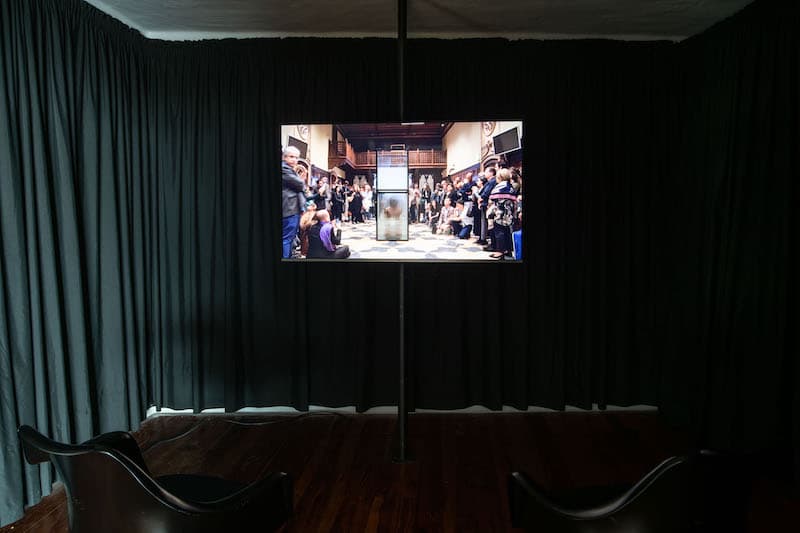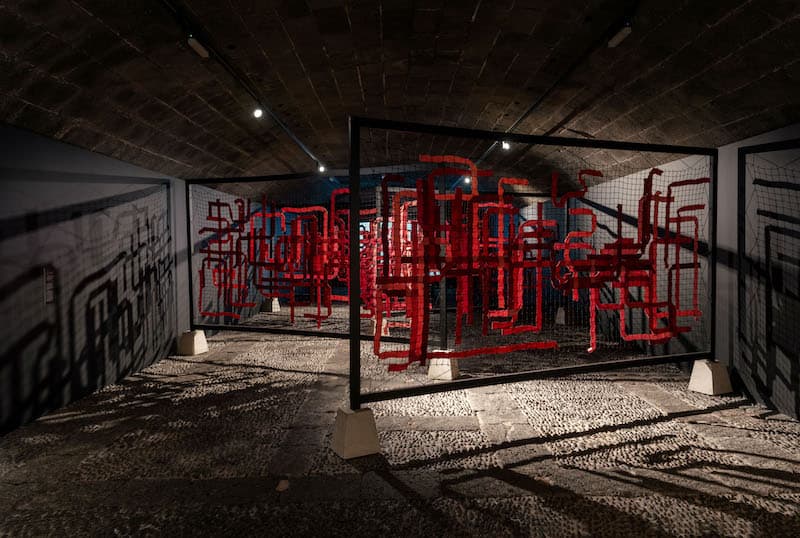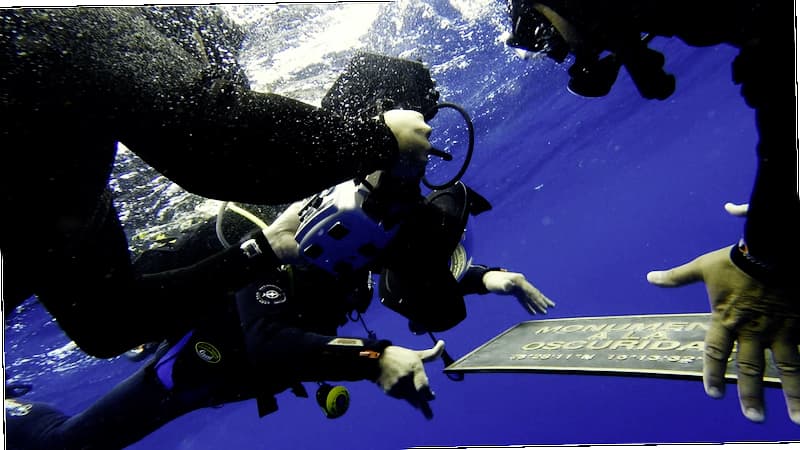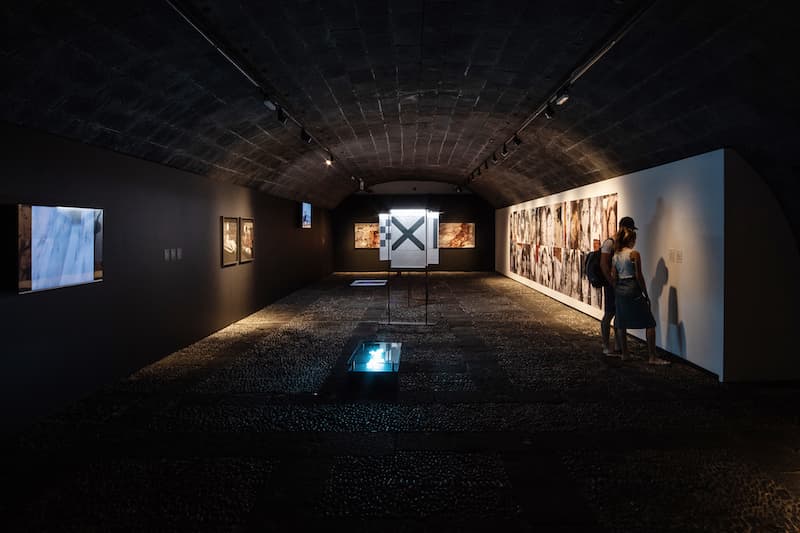Search
To search for an exact match, type the word or phrase you want in quotation marks.
A*DESK has been offering since 2002 contents about criticism and contemporary art. A*DESK has become consolidated thanks to all those who have believed in the project, all those who have followed us, debating, participating and collaborating. Many people have collaborated with A*DESK, and continue to do so. Their efforts, knowledge and belief in the project are what make it grow internationally. At A*DESK we have also generated work for over one hundred professionals in culture, from small collaborations with reviews and classes, to more prolonged and intense collaborations.
At A*DESK we believe in the need for free and universal access to culture and knowledge. We want to carry on being independent, remaining open to more ideas and opinions. If you believe in A*DESK, we need your backing to be able to continue. You can now participate in the project by supporting it. You can choose how much you want to contribute to the project.
You can decide how much you want to bring to the project.

Landing on the warm island when the cold really starts on the mainland. Setting the clock back one hour. Remembering Almodovar’s film Los abrazos rotos (Broken Embraces). And of course César Manrique. The roundabout where Penélope Cruz and Lluís Homar have the accident is the same one where Manrique died. Lanzarote becomes another character in Almodovar’s film. And for Manrique, Lanzarote was his best canvas. And cacti and volcanoes his pigments. The Canary Islands were located —at least in my school days— on the bottom right corner of the map of Spain. They were placed diagonally to Almería —where I am from — and Murcia. They were dislocated and enclosed in a rectangle. Sometimes that rectangle was missing a vertex. Lanzarote is the most east of the Canary Islands, the closest to Africa. Africa on maps is usually shown smaller in proportion to other continents. The Canaries are located far south of Morocco, facing the border with Western Sahara, which also appears to be drawn with a ruler, like the rectangle on the map. Lanzarote is the most northerly of the archipelago. In theory, nothing obstruct the view from Lanzarote to America. A triangulation: from Lanzarote to Africa, to the Iberian Peninsula (Europe) and to America. In psychology, triangulation is described as the tactic of indirect manipulation involving more than two entities.
The currents in this triangle have generated (im/e)migratory flows. One of them, the arrival in 1949 of more than 150 migrants from the Canary Islands to Venezuela, a story reported on the front page of a newspaper of the time, has inspired Adonay Bermúdez, artistic director of the 11th edition of the Lanzarote Biennial.
The accent of the Lanzarote people is very close to Latin American accent. I feel like I’m in the tropic. Continuing with geolocations, it turns out that the Canary archipelago is situated 4º above the Tropic of Cancer, between 28º and 30º north latitude. Due to this subtropical location I want to mention one of the most quoted figures in contemporary art, Édouard Glissant, and what he calls the “tropical night” with its “spirits and figures that weigh on the shoulders”. The tropical night —the silence and the noise, the darkness and the ocean— opens a portal to different orders of reality, unlocks the imagination and allows us to reconfigure our position in the world. This biennial is dedicated to the political potential of the imagination, it presents memories, stories and histories of patriarchal violence, colonialism, borders, emigration, historic memory, or exile. All of them have shaped this imagination.
Continuing with Glissant —who has become an almost paradigmatic example of negritude, of creolisation and of postcolonial theory— and the way he confronts fixed dialectical places: coloniser/colonised; I/other[1]Édouard Glissant in http://arte-nuevo.blogspot.com/2008/11/douard-glissant.html, the biennial focuses on Latin America. Colonised/coloniser?, treating this relationship as a transition from multiculturalism to interculturalism. A moment in which different cultures interact and generate shared cultural expressions in the purest style of the Antillean and his text Poetics of Relationship[2]Complete text in Spanish Poética de la relación.
In the context of blackness, the performance recorded in video Mediterráneo by the Cuban Carlos Martiel reminds us that we live in an anti-black society and how hard it is to keep breathing in a black body. During the 57th Venice Biennale and surrounded by white bodies, Martiel immersed himself in a glass urn that gradually fills with water from the Mediterranean Sea. With this piece, the Cuban artist also alludes to immigration policies and to the Mediterranean as a metaphor for freedom but a death trap for those who aspire to that freedom.
Tratado de maracas negras is one of the two pieces by the Venezuelan Marcos Montiel Soto, although he is white, its protagonists are two black maracas. These maracas dance in a surreal and volcanic landscape in the surroundings of Teseguite, Lanzarote. Teseguite means village or hamlet. This small village was founded by slaves from Africa who were forbidden to settle in Teguise, the former capital of the island.
And more migratory drifts, this time about how trade and the introduction of species for economic purposes weaves a network of relationships capable of changing societies, even the landscape of the territory. The solo show Los ojos bajo la sombra by the Mexican Tania Candiani is based on a previous project by her inspired by the Japanese women imprisoned in American concentration camps after World War II and forced to weave enormous camouflage nets. For this piece, in the role of weavers, Candiani has placed craftswomen from Lanzarote who work with cochineal. It is impossible to have more interconnected migratory flows: the crimson-producing insect arrived on the island of Lanzarote in 1835 from the Iberian Peninsula, coming from Mexico.
Como la liebre en el páramo is the title of the biennial, a tribute to the poet Leandro Perdomo (Lanzarote, 1921-1993) on the 30th anniversary of his death. Throughout its four months on display, the event has been revealing a series of episodes through collective and individual exhibitions and a multitude of activations: conferences, panels, projections and performances that take place all over the island.
One of the first chapters was the group exhibition Bienes ocultos. It spoke of borders and walled states. Of cruel neoliberal policies. The decline of democracy, feminicide. Of migratory pressure, or necropolitics. And it counted on the imagination of Tracey Emin, the Canarian Teresa Correa, Lotty Rosenfeld, Julieta Hanono, Teresa Margolles and Mounir Fatmi among others.
More injustices, and more cinematographic references. On 2 October 1968, in Mexico City, a terrible massacre took place in Tlatelolco, in the Plaza de las Tres Culturas, causing the death of more than 300 people. It was the brutal culmination of crimes that could be considered crimes against humanity, perpetrated by the Mexican government against the students. Mexican Ximena Labra presents the film Tlatelolco Public Space Odyssey, inspired by Stanley Kubrick’s visionary film 2001: A Space Odyssey, released also in 1968. This film depicts the discovery of a mysterious and minimalist sculpture in outer space. Labra devises a strategy to infuse the likewise monolithic “Monument to the Victims of Tlatelolco” with hallucinatory powers. To do this, she distributes copies of the monument in different parts of Mexico City and records the “minimal” reactions of the people who interact with the copies of the monument.
To end this biennial tour, I return to the beginning with a kind of flashback. Firstly because, going back to the maps, the work Monumento a la oscuridad is exactly geolocated at 28°28’11″N 16°13’32″W in the Atlantic Ocean. And secondly, because the artists’ imagination this time goes to historical memory, one of the multiple dramatic knots of Madres paralelas (Parallel Mothers), Almodóvar’s latest film. Eugenio Merino and Miguel G. Morales recover the figure of the Tenerife poet Domingo López Torres, thrown into the sea by the Francoists in a sack full of stones. In collaboration with researchers from the collective Memoria Histórica, the artists fix the spot where López Torres murder was committed and place a bronze commemorative plaque that reads “Monument to the darkness”.
Yet the biennial is still running for almost two more months! It continues with the group exhibition Las palabras que aún no poseemos inspired by the text Sister Outsider by Audre Lorde. “Sister/outsider”, this double idea that obsessed the writer, remains fundamental in today’s feminist narratives. The show will feature the imagination of artists Carmela Garcia, Marina Vargas, Martha Rosler, Julia Galán, Doris Salcedo, Agnes Essonti and Shadi Gharidian. Because their works focus on the ability to speak out and make visible those silences that have condemned women’s lives for decades.
The 11th edition of the Lanzarote Art Biennial ends on 30 March. All the info on their website.
[Cover photo: “Mediterráneo” by Carlos Martiel, film still].

“Mediterráneo” by Carlos Martiel. Exhibition view at MIAC Lanzarote

“Tratado las maracas negras” by Marcos Montiel Soto. Installation view (detail) at MIAC Lanzarote

“Los ojos bajo la sombra” by Tania Candiani. Exhibition view at MIAC Lanzarote

“Tlatelolco Public Space Odyssey” by Ximena Labra. Film still

“Monumento a la oscuridad” by Eugenio Merino and Miguel G. Morales. Film still

Exhibition view “Bienes ocultos” at MIAC Lanzarote
| ↑1 | Édouard Glissant in http://arte-nuevo.blogspot.com/2008/11/douard-glissant.html |
|---|---|
| ↑2 | Complete text in Spanish Poética de la relación |

María Muñoz-Martínez is a cultural worker and educator trained in Art History and Telecommunications Engineering, this hybridity is part of her nature. She has taught “Art History of the first half of the 20th century” at ESDI and currently teaches the subject “Art in the global context” in the Master of Cultural Management IL3 at the University of Barcelona. In addition, while living between Berlin and Barcelona, he is a regular contributor to different media, writing about art and culture and emphasising the confluence between art, society/politics and technology. He is passionate about the moving image, electronically generated music and digital media.
Portrait: Sebastian Busse
"A desk is a dangerous place from which to watch the world" (John Le Carré)